Cues & Departments
Creating and Editing Cues
Cues are at the heart of every Script Elephant show. They are what connect the talent-facing spoken word in your script with the direction for your technical team.
It is this tight integration between a script's spoken word and its technical cues that set Script Elephant apart from traditional run of show platforms, because we show both things in context with each other.
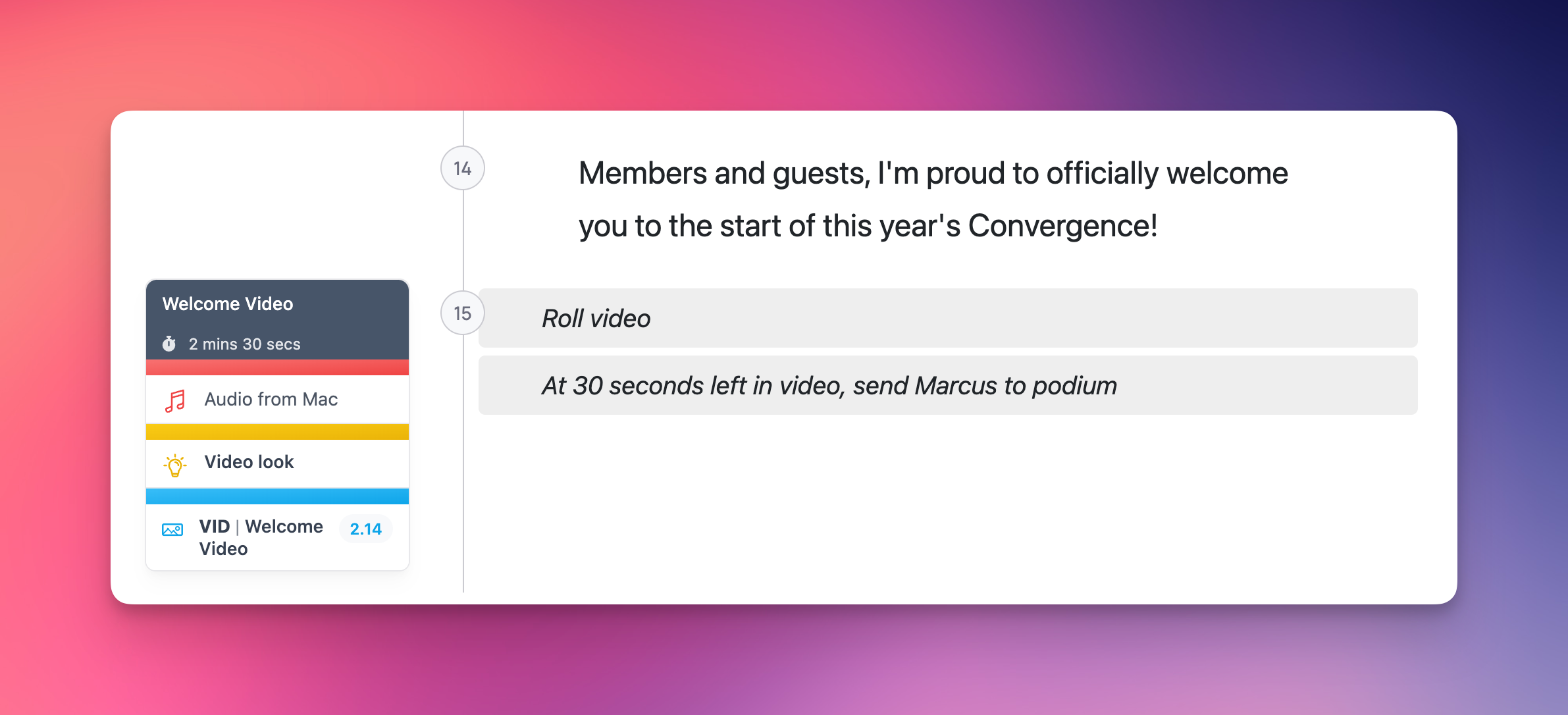
To ensure that each cue occurs at the correct point in your script, each cue is connected to a script section. The beginning of each section is therefore meant to represent a single instant in time when your show's team are meant to perform every action described in that cue—simultaneously.
In the above example, the audio, lighting, and video departments will all perform their respective actions immediately after the speaker has finished saying the word "Convergence".
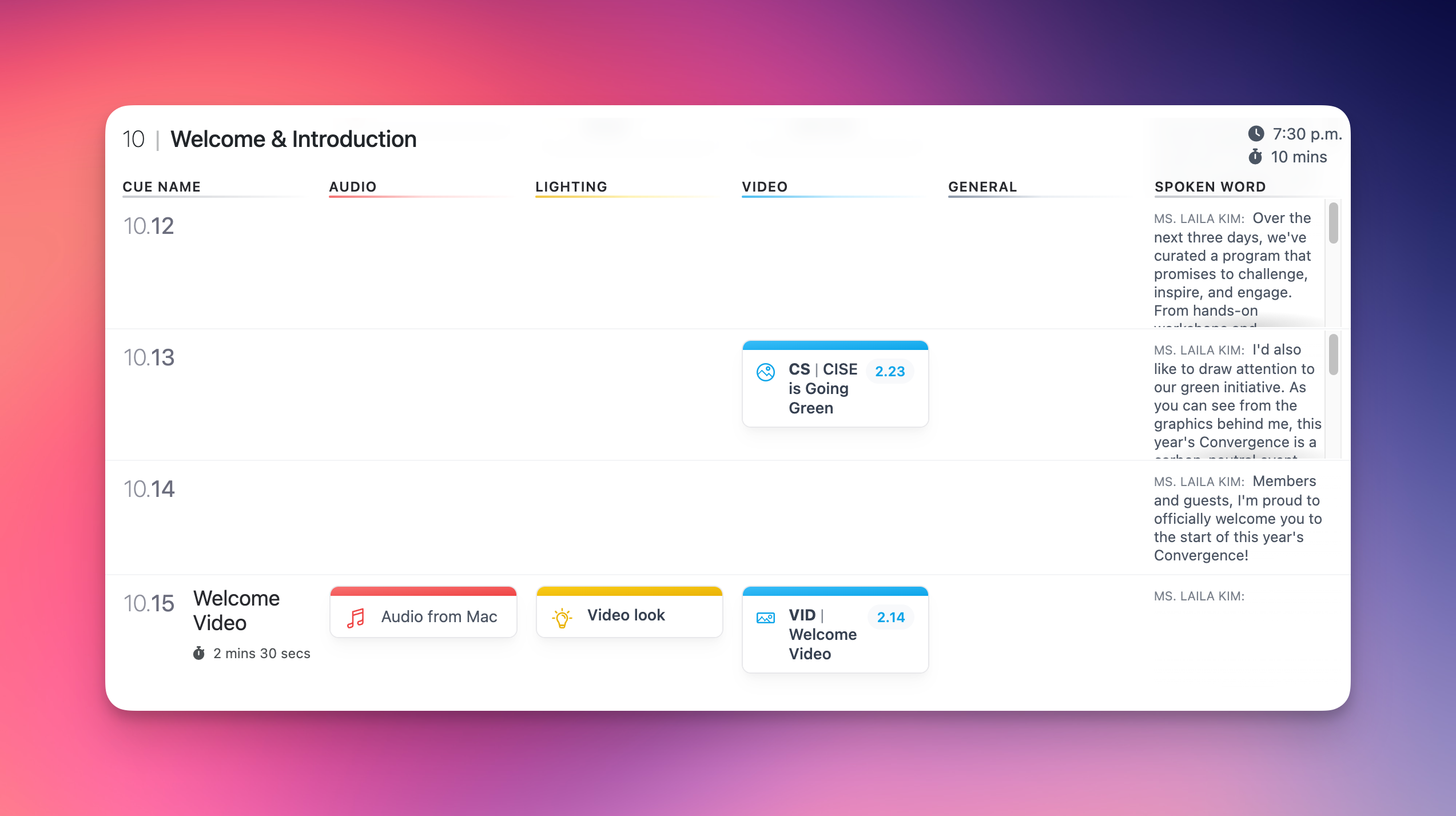
These cues are also visible from our run of show view, which shows the same information in a more condensed, rundown-style view. Notably, the spoken word is still visible within scrollable panes in the last column, so your technical team are still able to understand the spoken word context of the show, and hit each cue together at exactly the right moment.
Creating cues
To create a new cue, first navigate to edit a block within your session. If you have permission to edit cues, you will see an Add Cue button to the left of each section.
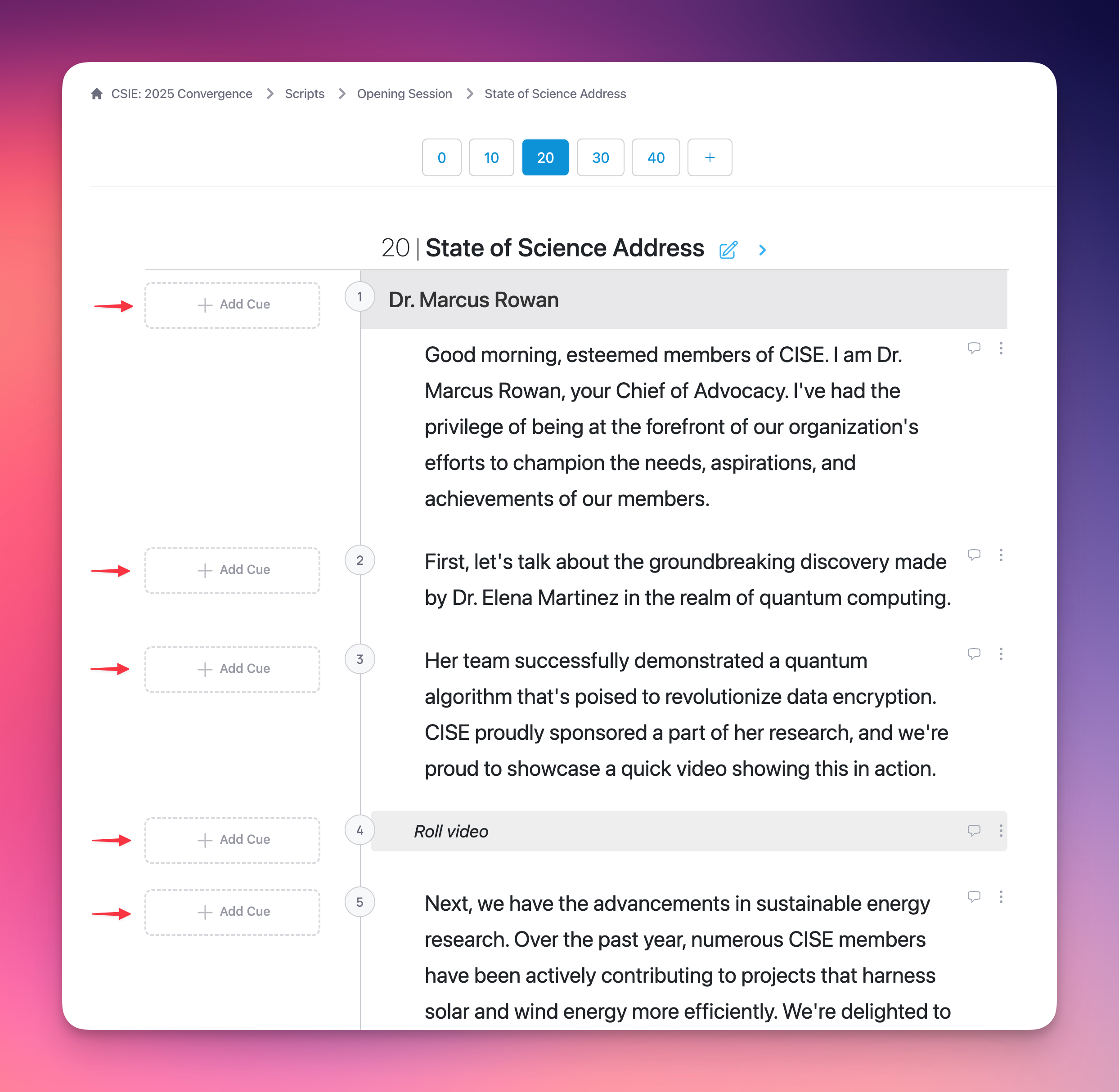
To add a cue, click Add Cue and the cue editor will open.
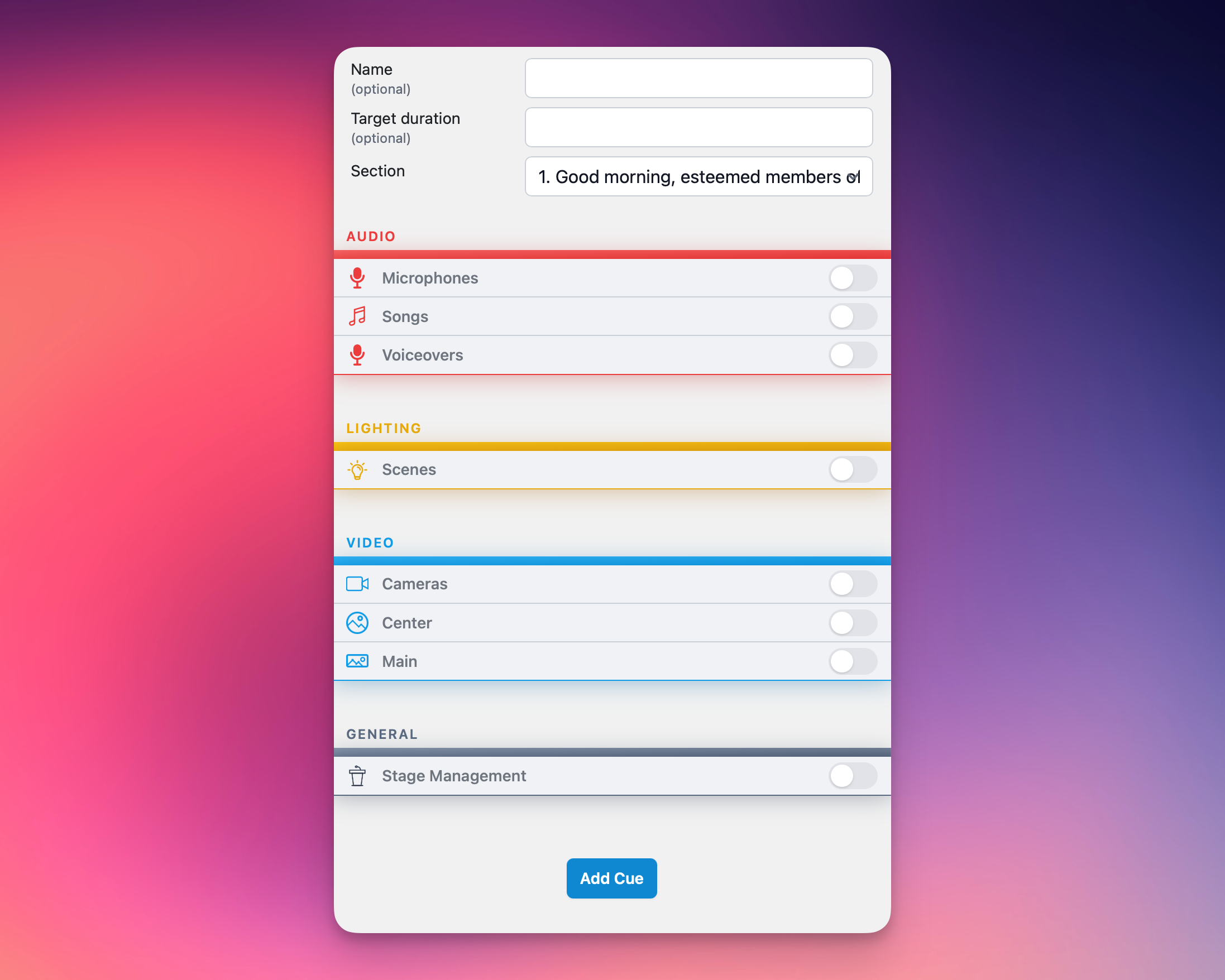
The cue editor gives you toggle switches for each subdepartment in your current production. You can toggle on and fill out as many subdepartment cues as you like, and this will add them all to this cue.
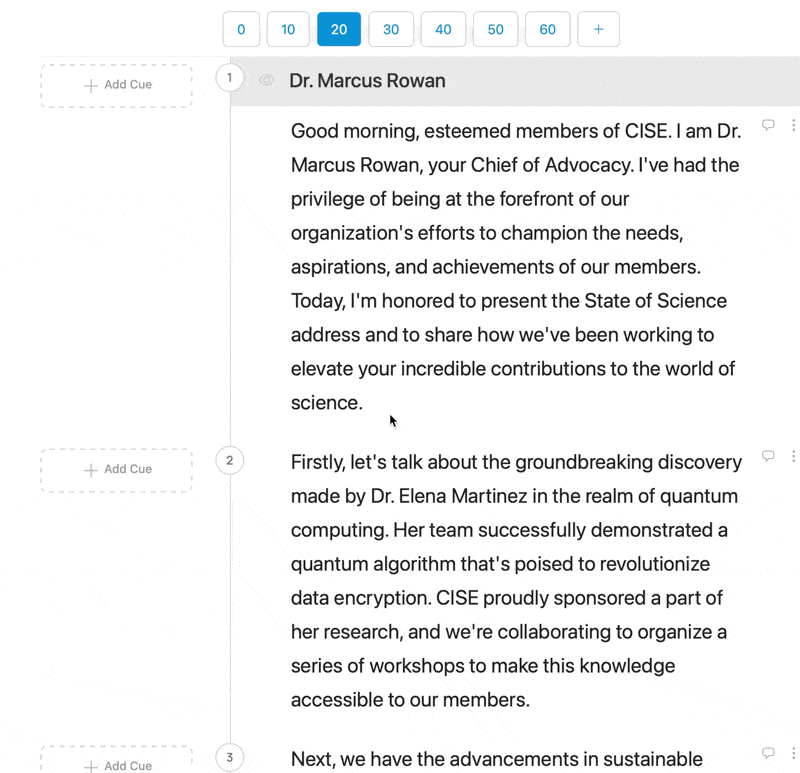
Editing cues
To edit an existing cue, navigate to it within the block editing page. If you have permission to edit cues, you will see an edit icon at the bottom of the cue. Click this to open the cue editor.
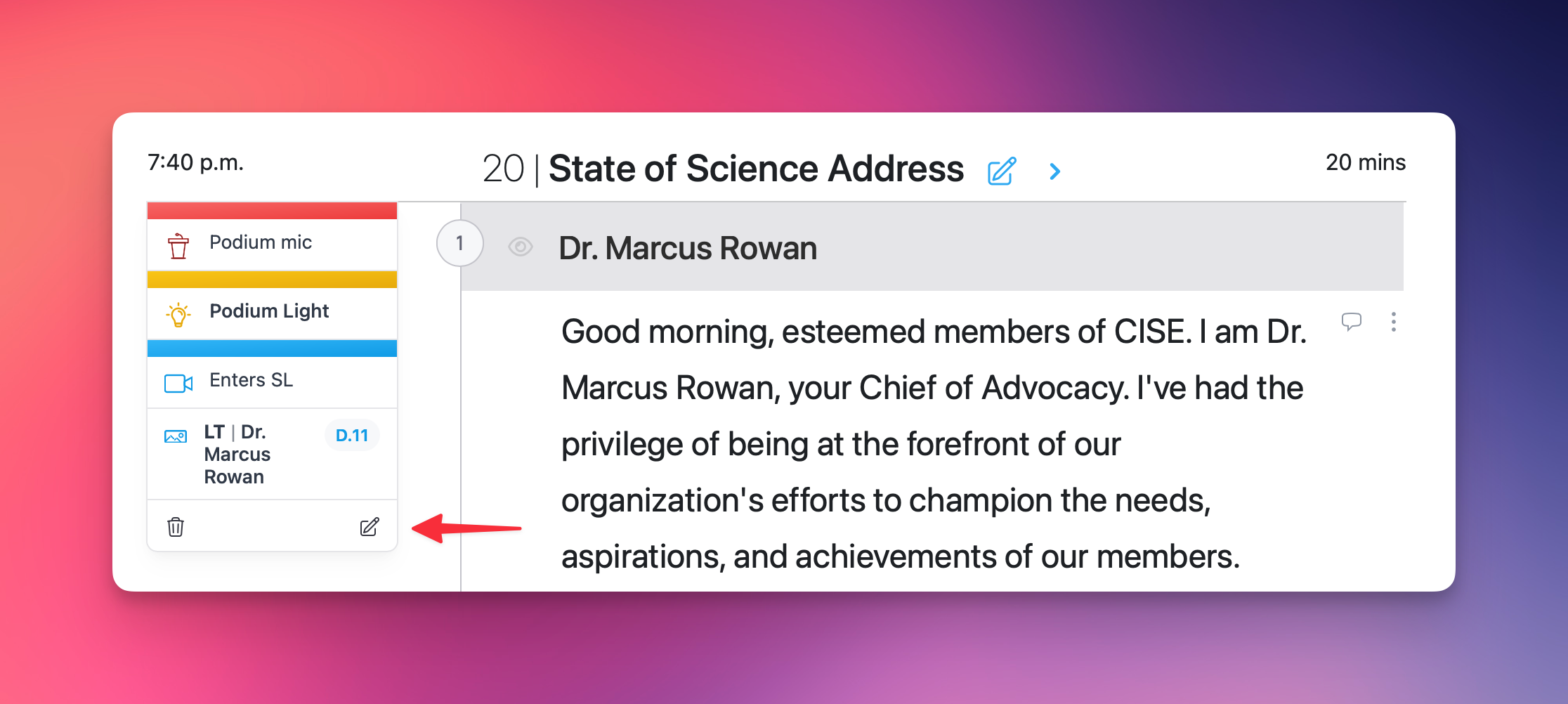
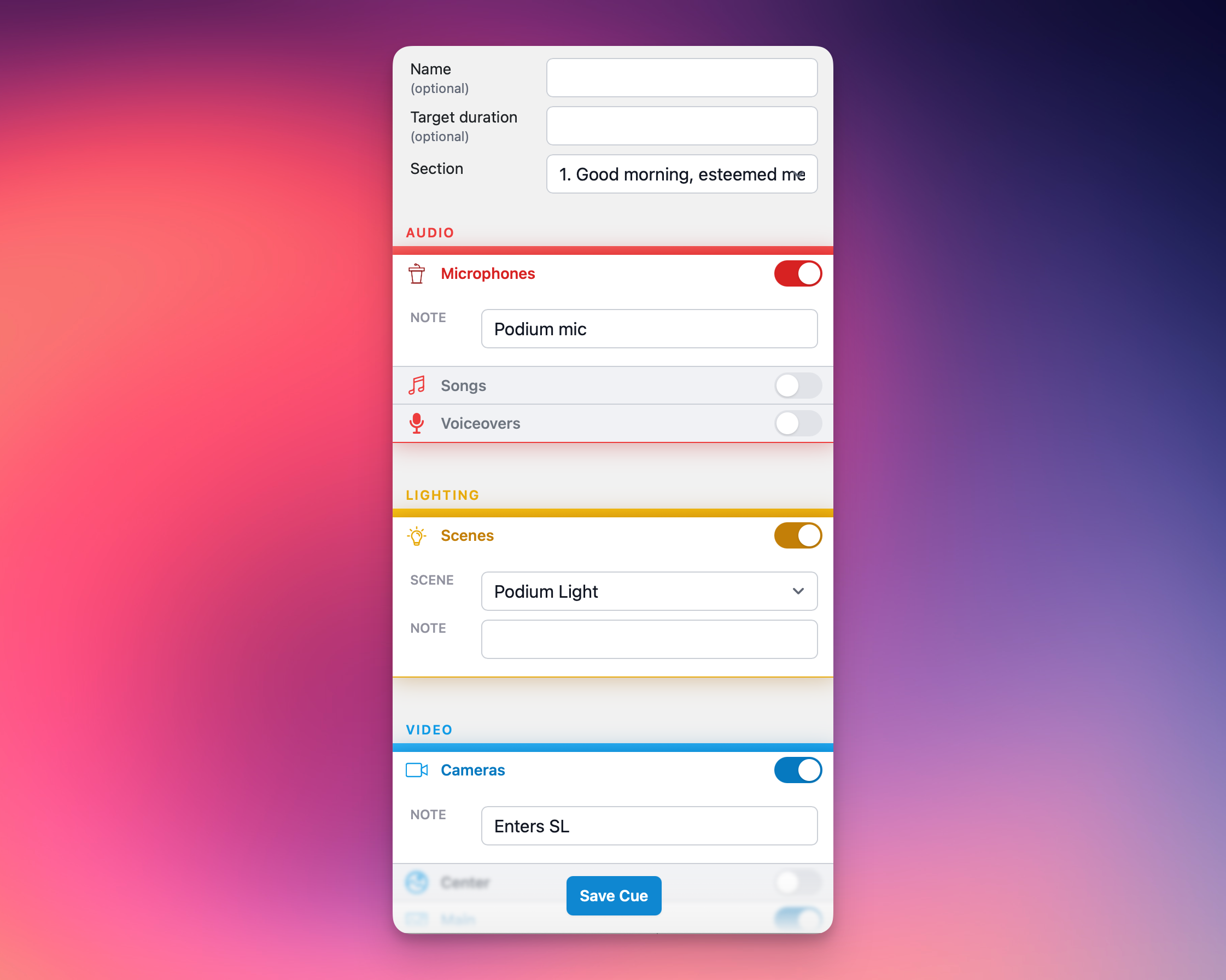
Within each cue editing window, you can change:
- Name: This is an optional name for this cue. This can be helpful for a director to use this name to verbally call a complex cue. For example, "Intro Sequence".
- Target Duration: An optional field to specify how long a cue is expected to last. For example, during videos or other special moments, you can indicate how long the team should hold on this cue before advancing.
- Section: You can use this to move this cue to any other sections in this block that don't already have a cue.
- Audio/Lighting/Video/General: These are the various subdepartments that exist in this production. Use these fields to create, edit, and delete subdepartment cues.
After you click Save Cue, your changes will be applied.
Deleting cues
To delete an entire cue, including every subdepartment cue within it, navigate to it within the block editing page. If you have permission to edit cues, you will see an trash can icon at the bottom of the cue. Click this to delete the cue.
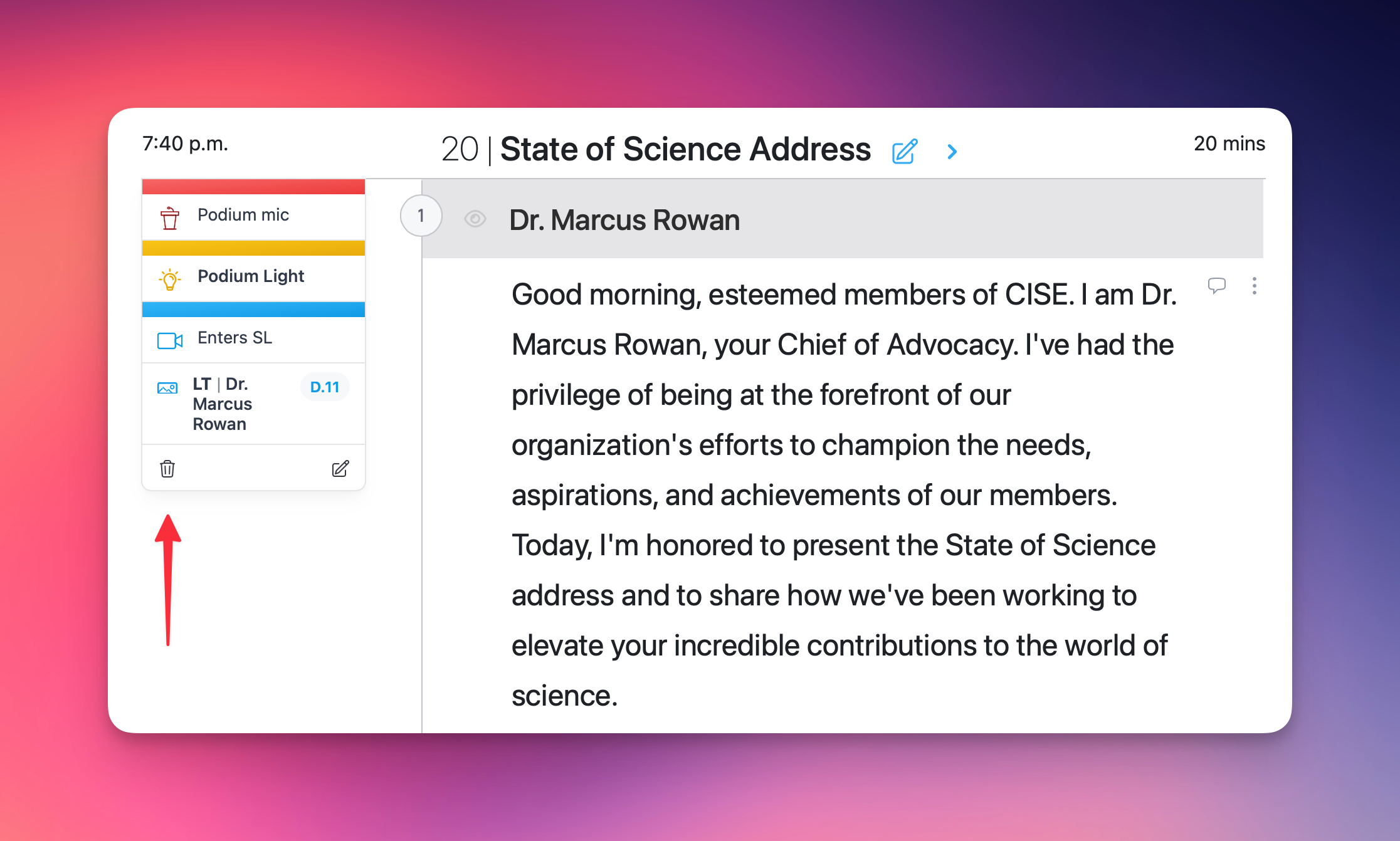
Deleting subdepartment cues
If you only want to delete individual subdepartment cues (for example, you only want to delete the "Podium mic" microphone cue from the above example, but you want to leave the lighting, camera and graphics cues intact), then you need to edit the cue and switch off the subdepartments that you want to delete.

